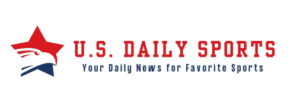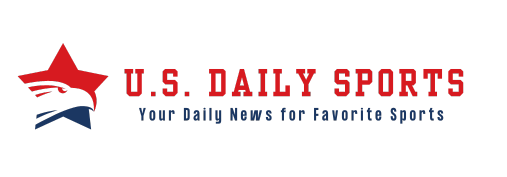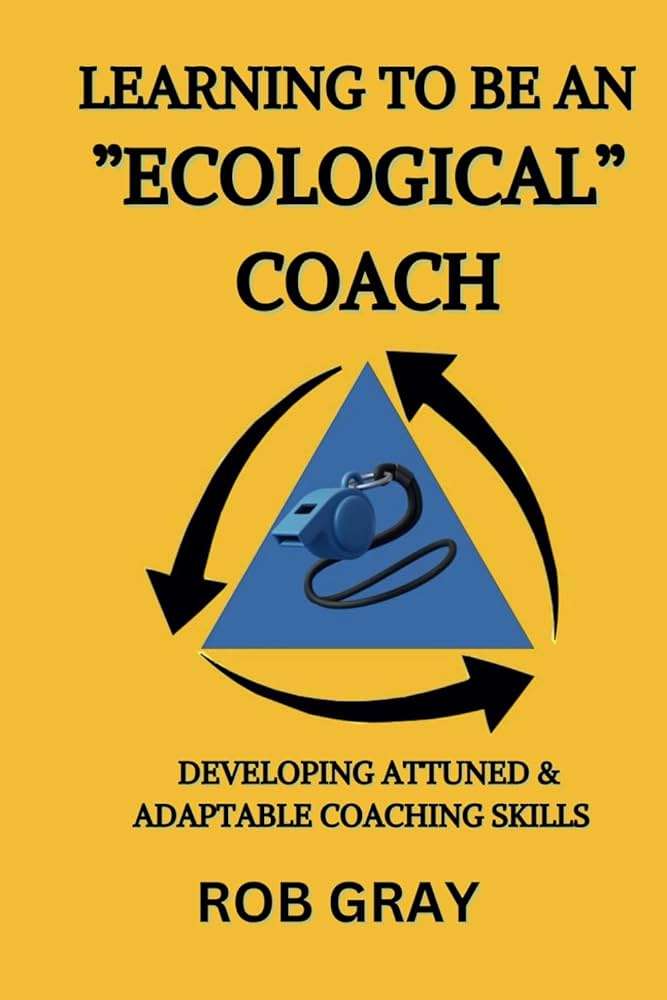I beforehand reviewed Rob Grey’s first e-book, How We Study to Transfer. I haven’t learn his second e-book, Studying to Optimize Motion, largely as a result of I hearken to his podcast and wasn’t certain I wanted one other learn on related subjects. After I heard his third e-book, Studying To Be an “Ecological” Coach: Growing Attuned, was going to take a really particular take a look at teaching, although, it undoubtedly went on my studying record.
Right here’s a quote from early within the e-book that advised me it was going to be just about precisely what I hoped for:
“How can coaches develop expertise in manipulating constraints, choosing up the affordances of the athletes we’re working with, observing motion, stepping in with instruction to information exploration, co-adapting apply, utilizing demonstration, educating in group settings, use knowledge to tell their apply design? Discover I’m calling these items “expertise”. We’re not going to simply purchase data about these items. We’re going to give attention to how coaches can develop their means to do them, in a particular context. This has been recognized as a key limitation in most coach improvement and education schemes…”
Some issues to know entering into
Earlier than I dive into reviewing the content material, let me deal with one thing first. This e-book wanted one other spherical of edits. I don’t imply that from a structural perspective. No issues there, from my perspective. I imply when it comes to typos and the like. There are fairly just a few of them. That little doubt will trouble some readers greater than others.
The opposite factor I’ll say is that Grey is an educational. Whereas he’s additionally a practitioner, his writing is strongly influenced by the tutorial facet of issues. Plenty of citations and references to analysis (pages of them behind the e-book). Language that may in all probability problem many/most readers in locations. It’s not as dangerous as studying an educational paper, however it isn’t all the time as straightforward because it is perhaps.
From a content material perspective, the primary couple chapters primarily body what comes later. Right here Grey talks a bit about talent acquisition principle, however it’s not a deep dive like in his first two books. That’s a theme all through. He typically factors readers to that prior work for deeper exploration. I undoubtedly don’t assume you have to learn these books first, however no less than having a fundamental understanding of ecological dynamics, constraints led method, and associated subjects is beneficial.
Information “of” vs “about”
The primary correct chapter of the e-book discusses the distinction between “data of” and “data about”. In our sporting context you’ll be able to take a look at the distinction this fashion. Information of one thing is the power to carry out that motion, talent, and so forth. Information about, however, is principally stuff you’ll be able to verbalize.
Grey makes use of two examples to clarify.
The primary is bike using. He describes within the e-book how most individuals can’t accurately inform you how one can flip left on a bicycle, however they’ll definitely do it with out bother. This can be a case the place they clearly have data of, however don’t even have data about.
The second instance flips that round. Rob works so much in baseball. As he writes, nevertheless:
“I’ve loads of data about baseball batting. To be conceited, I perceive the constraints, info, attractors, and so forth. in addition to in all probability anybody on the planet. However I’ve a really strict rule I exploit when doing on-field demonstrations – get another person to swing the bat! If I did my very own demos, I might instantly lose all credibility as a result of my data of hitting may be very low.”
Grey goes on to border this about vs. of distinction when it comes to coach improvement. A number of what occurs in that area is amassing data about. That’s watching movies, studying books, going to conferences, and so forth. There’s precious info available on this about area, to make certain. What Grey argues, nevertheless, is that it shouldn’t be confused with the necessity to purchase data within the of area – the precise doing.
How can we purchase data of teaching? Via the deliberate apply of teaching, in fact. But in addition via interacting with different coaches.
Consultant Studying Design
The primary chapter of what I might take into account the core of the e-book seems to be at Consultant Studying Design. Chances are you’ll translate that to imply game-like. I personally have been utilizing the time period “sport context” to explain the concept we’re in the end making ready gamers to play the sport, so we must always prepare them in a manner that mimics the sport as a lot as doable – is consultant of the sport.
Right here’s how Grey talks about making certain apply actions are consultant:
“How, as a coach, are you aware whether or not the data accessible to an athlete in apply is consultant? There are just a few essential qualities I search for. First, consultant info is dynamic: the alternatives for motion it specifies seem and disappear over time. Second, it specifies occasions as they’ll happen within the sport, not simply in apply. Third, it’s variable–it doesn’t specify the identical affordance (alternative for motion) on every repetition.”
Right here’s an amazing quote on this matter from the e-book.
That, in fact, is simply the primary degree. Merely having the ability to inform what sport you’re practising for doesn’t mechanically make issues consultant.
Placing the Constraints Led Method into motion
Ecological Dynamics (ED) and the Constraints Led Method (CLA) now totally come to the forefront of the dialogue of teaching software. One of many main challenges coaches simply beginning to find out about these ideas – particularly CLA – is understanding how one can apply them in apply. That is particularly annoyed by the truth that you’ll be able to’t merely give them a transparent set of options.
Inherent within the ED method is the concept each participant is totally different. Consequently, they gained’t all reply to issues the identical manner. Thus, there’s a heavy dose of artwork and artistic problem-solving required to educate on this method (arguably, to do it properly in any method).
One other space of push-back on CLA is the concept coaches can’t have an concept of the motion answer we would like the participant working towards. The misperception is that below ED/CLA the coach simply sits again and let’s them work the whole lot out for themselves. As Grey notes, although:
“Bear in mind, as a coach, we’re not going to disclaim the truth that we all know one thing concerning the new motion answer we wish our athletes to have. We wish to choose constraints which might be going to steer the athlete in a sure path of their seek for a brand new answer.”
The chapters within the center a part of the e-book focus on how we try this. They cowl the subjects of:
- Designing Efficient Constraints & Utilizing The CLA
- Making A Talent Simpler For A New Learner
- Teaching To The Particular person Athlete & Working With Teams
- Educating A Coach’s Consideration & Studying To Observe Motion
- Perceiving The Affordances Of Others
- Utilizing Imagery, Demonstration & Verbal Instruction
- What To Do Subsequent: Adapting Apply
I grabbed a bunch of quote and snippets via these chapters. I’m certain different readers will do the identical.
The stuff round apply
The subsequent group of chapters take a look at issues a bit extra broadly. They discover the atmosphere we create and the way we affect gamers on a psychological degree. Subjects embrace:
- Creating A Tradition And A Type Of Life
- Inspiring Motivation, Autonomy & Confidence
- Embracing The Chaos And Adapting To The Constraints Of Teaching
- Rethinking How We Observe & Assess Progress
The motivation chapter was so stuffed with nice takeaways that I needed to cease pulling quotes and simply bookmark the entire chapter for re-reading! That was much less true of the chapter on assessing. There are undoubtedly concepts there, however Grey notes it’s a fledgling space of analysis. Plus, there isn’t a lot for a volleyball coach to latch on to because the examples aren’t from significantly related sports activities.
Coach schooling and improvement
The final chapter brings factor again round to the query of information about vs. data of. That is particularly with regard to teaching. Citing a little bit of analysis, Grey means that some issues – the about stuff – can in all probability be moderately addressed via coach schooling. The remainder – the of components – require extra “in situ” improvement, to make use of his terminology.
Right here’s an instance.
In a single research researchers centered on educating the worth of exterior suggestions over inside, and of not offering instruction to an athlete whereas they had been performing (higher to do it earlier than or after). This was accomplished by way of a presentation. They discovered that the coaches concerned did use extra exterior and fewer inside suggestions after the coaching. There was no actual change within the timing of their instruction, nevertheless. Grey’s speculation is that this may very well be as a result of the suggestions factor falls extra into understanding (about) whereas the instruction timing is extra within the doing (of) realm.
The conclusion – unsurprisingly – is that whereas coaches can clearly find out about teaching via schooling, truly studying to educate occurs within the teaching area.
Conclusion
Though the e-book has its faults, I believe Studying To Be an “Ecological” Coach may be very a lot price studying. If you happen to’re in any respect like me, there will probably be a great deal of bits you spotlight and areas you’re prone to refer again to later. Positively advisable studying.
6 Steps to Higher Practices – Free Information

Subscribe to my weekly publication in the present day and get this free information to creating your practices the perfect, together with masses extra teaching ideas and knowledge.






